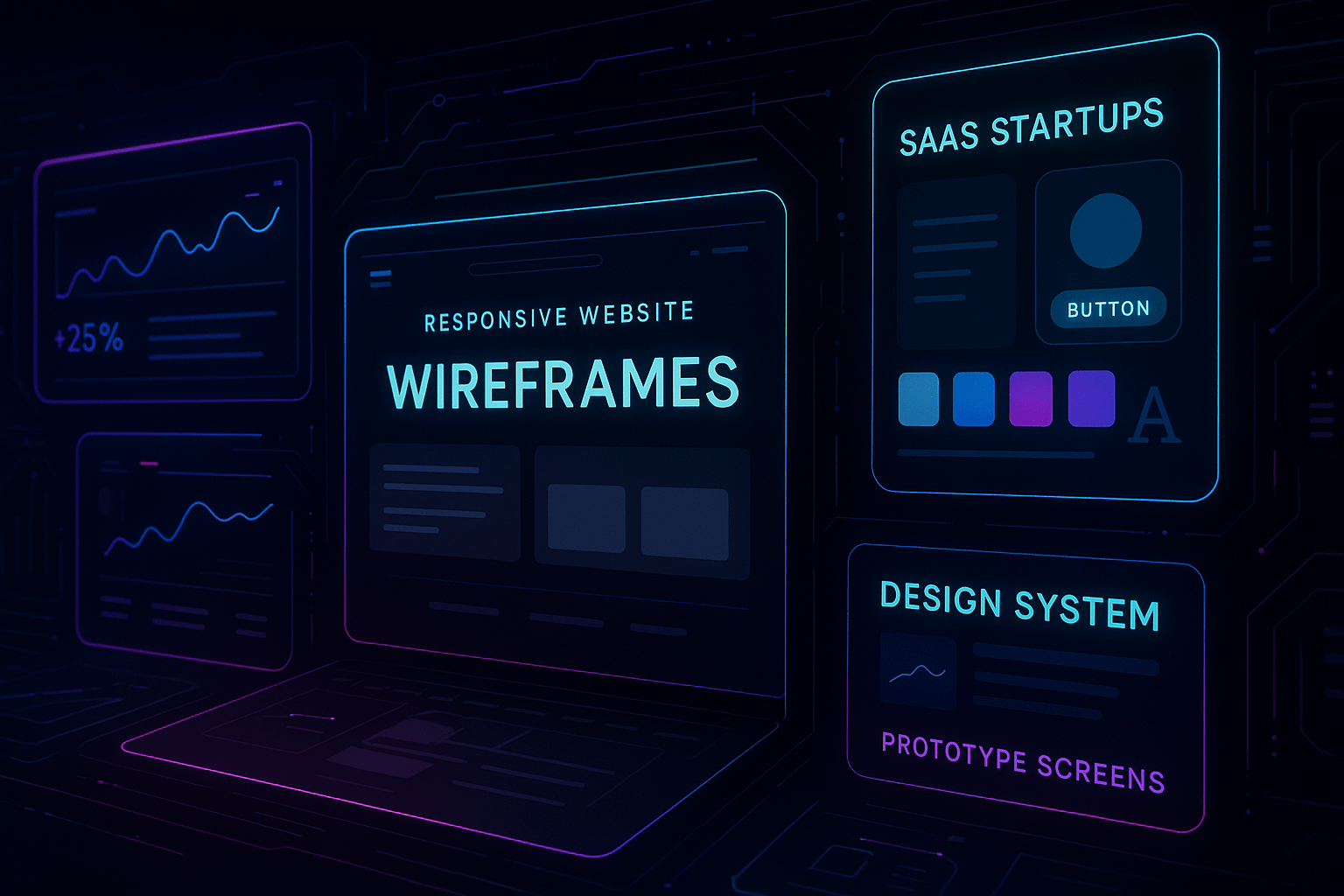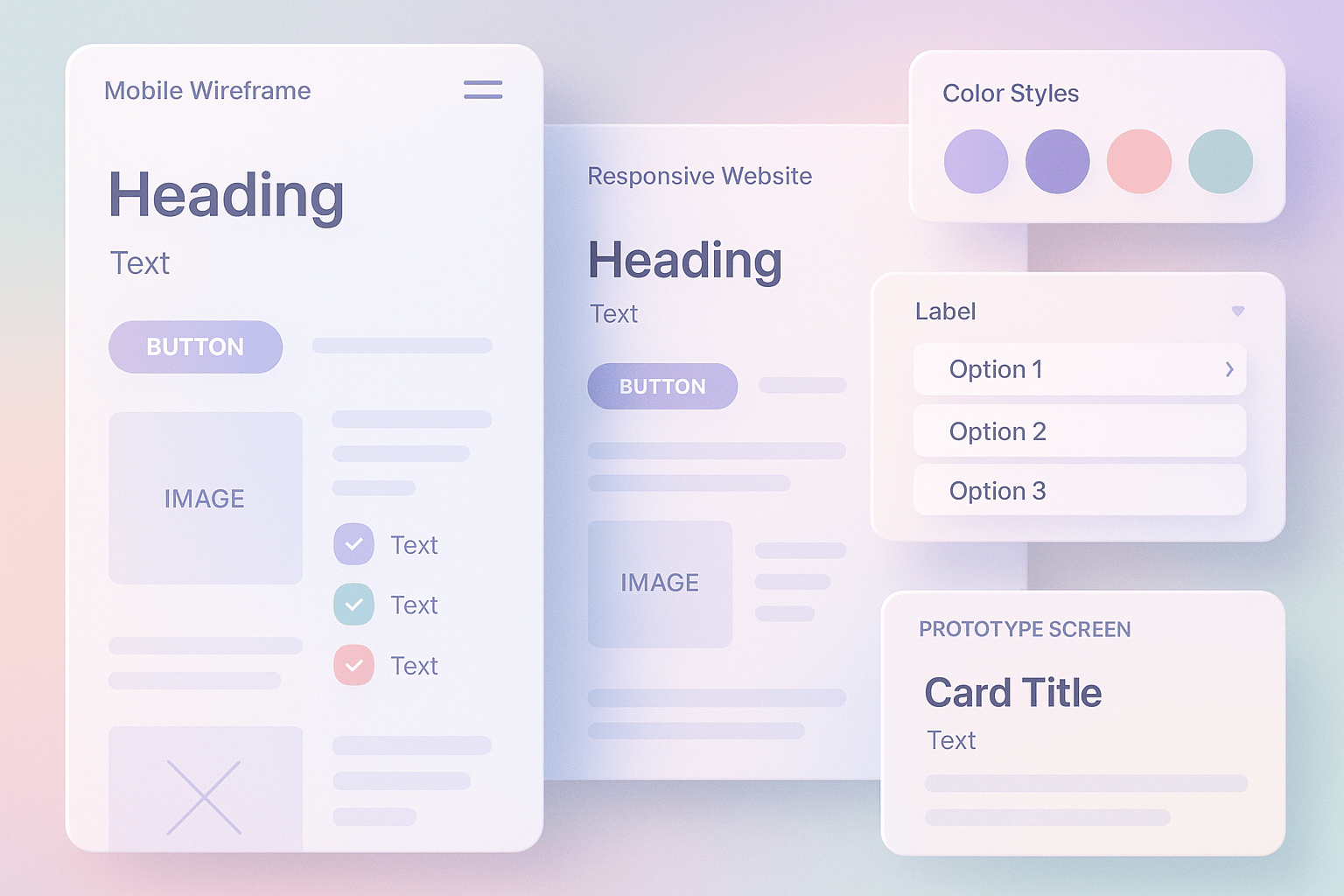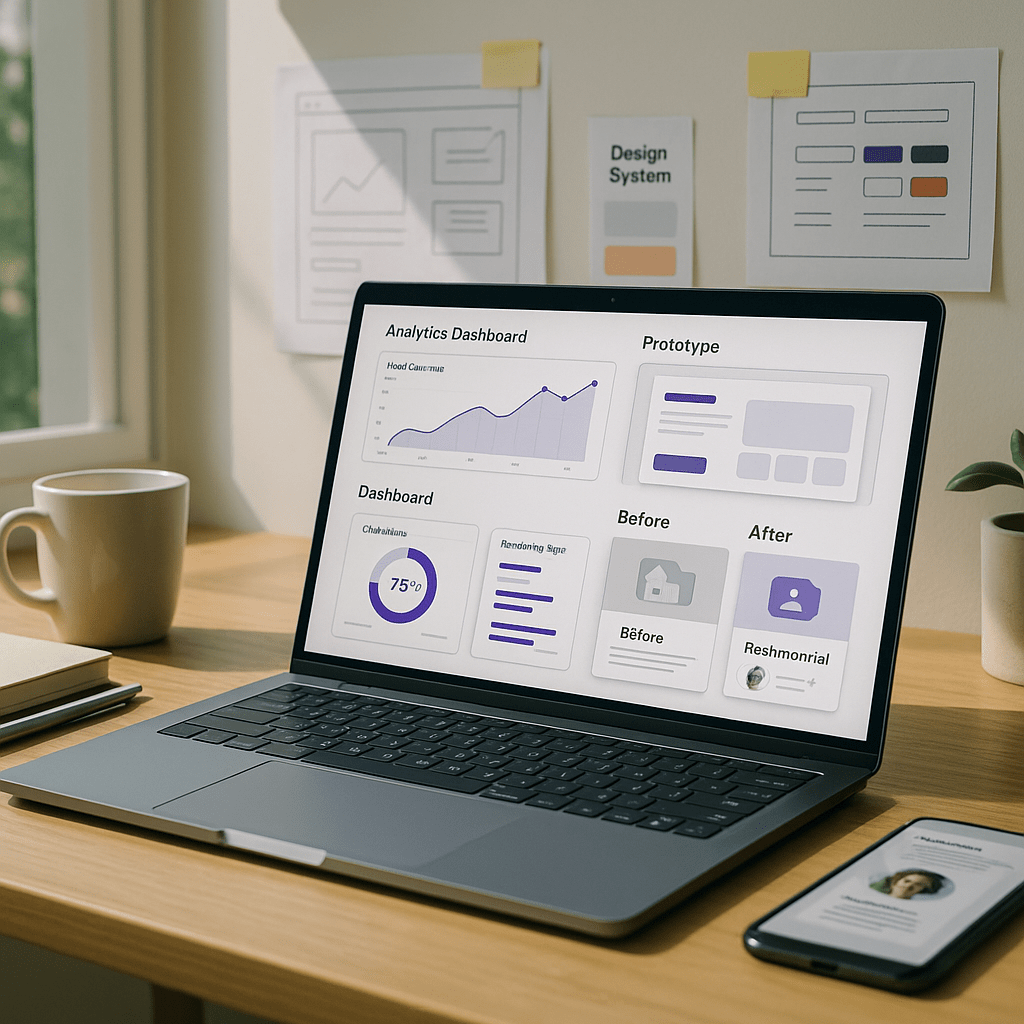UI/UX Design Tips for SaaS Startups: Drive Better Results
by Design Delulu Editorial · September 12, 2025

In the competitive landscape of Software as a Service (SaaS), having a functional product is just the beginning. The real differentiator lies in how users experience your platform. For SaaS startups, investing in strategic UI/UX design isn't just about aesthetics—it's about creating intuitive experiences that drive user adoption, reduce churn, and ultimately fuel business growth. Poor user experience can make even the most innovative software feel clunky and unreliable, while thoughtful design transforms complex functionality into seamless workflows that users love.

Why SaaS Startups Need UI/UX Design
Key Challenges SaaS Startups Face
SaaS startups operate in a unique environment with distinct challenges that make UI/UX design particularly critical:
- User Onboarding Complexity: SaaS products often involve complex workflows and multiple features. New users can easily become overwhelmed during the initial experience, leading to high abandonment rates. Without clear navigation and intuitive design patterns, users struggle to understand the product's value proposition within the crucial first few minutes.
- Feature Discoverability: As SaaS products evolve, they accumulate numerous features and capabilities. Users frequently underutilize the platform because they can't easily discover or understand how to access advanced functionality. This directly impacts customer lifetime value and satisfaction scores.
- Retention and Churn Prevention: In the subscription-based SaaS model, user retention is paramount. Confusing interfaces, lengthy task completion times, and frustrating user journeys contribute significantly to customer churn. Every friction point becomes a potential reason for users to cancel their subscription.
- Scalability and Consistency: As startups grow, maintaining design consistency across different product areas, user types, and device experiences becomes increasingly challenging without proper design systems and guidelines.
How UI/UX Design Solves These Problems
Strategic UI/UX design addresses these challenges through several key approaches:
- Streamlined User Onboarding: Well-designed onboarding flows guide users through key features progressively, using progressive disclosure principles to prevent cognitive overload. Interactive tutorials, contextual help, and clear visual hierarchies help users achieve their first success quickly.
- Intuitive Information Architecture: Proper categorization, logical navigation structures, and search functionality make it easy for users to find what they need. Smart use of menus, filters, and categorization reduces the time-to-value for complex tasks.
- Data-Driven Design Decisions: UX research and usability testing reveal actual user behavior patterns, allowing startups to optimize based on real usage data rather than assumptions. This leads to interfaces that align with user mental models and expectations.
- Consistent Design Systems: Establishing reusable components and design patterns creates consistency across the platform while enabling faster development cycles as the product scales.

Essential Features of UI/UX Design for SaaS Startups
Must-Have Design Elements and Workflows
Responsive Dashboard Design: Your main dashboard should adapt seamlessly across desktop, tablet, and mobile devices. Users increasingly expect to access SaaS tools from various devices, and responsive design ensures consistent functionality regardless of screen size.
Progressive Disclosure: Implement layered information architecture that reveals complexity gradually. Start with essential functions prominently displayed, then provide easy access to advanced features without cluttering the primary interface.
Real-Time Feedback Systems: Include loading states, progress indicators, and immediate feedback for user actions. SaaS applications often involve data processing that takes time, and users need clear indication that their actions are being processed.
Contextual Help and Documentation: Integrate help content directly into the interface where users need it most. Tooltips, inline guidance, and contextual documentation reduce the need to leave the application for support.
Customizable Workspaces: Allow users to personalize their experience through customizable dashboards, saved views, and workflow preferences. This increases user investment in the platform and improves daily usability.
Real-World Implementation Examples
Slack's Sidebar Organization: Slack uses collapsible sections and smart categorization to help users manage multiple channels and direct messages without overwhelming the interface. The design scales from small teams to enterprise organizations.
Notion's Block-Based Interface: Notion's modular approach to content creation uses drag-and-drop functionality and clear visual blocks, making complex document creation feel intuitive and flexible.
Figma's Collaborative Features: Figma integrates real-time collaboration directly into the design interface with clear user cursors, live editing indicators, and seamless commenting systems that don't interrupt the design workflow.

Common Mistakes to Avoid
Typical Pitfalls in UI/UX Design for SaaS Startups
Feature Overload in Initial Views: Many SaaS startups try to showcase all their capabilities immediately, creating overwhelming interfaces that confuse rather than impress new users. The desire to demonstrate value often backfires when users can't identify where to start.
Inconsistent Design Patterns: Without established design systems, different product areas develop distinct visual languages and interaction patterns. This forces users to relearn how to navigate different sections of the same application.
Neglecting Mobile Experience: While many SaaS tools are primarily desktop applications, users increasingly expect some level of mobile functionality for monitoring, approvals, or quick tasks. Ignoring mobile can limit user engagement and satisfaction.
Over-Complicated Navigation: Deep menu structures, unclear labeling, and too many navigation options can make it difficult for users to build mental maps of your application structure.
Insufficient User Testing: Designing based on internal assumptions rather than actual user behavior leads to interfaces that make sense to the development team but confuse real users.
How to Do Better
Start with User Journey Mapping: Before designing interfaces, map out the complete user journey from initial signup through advanced feature usage. Identify pain points and opportunities for improvement at each stage.
Implement Progressive Enhancement: Design for the most common use cases first, then layer on advanced functionality. Ensure that core tasks remain simple while providing power users with the tools they need.
Establish Design Systems Early: Create reusable components and clear guidelines for colors, typography, spacing, and interaction patterns. This investment pays dividends as your product grows.
Prioritize User Research: Conduct regular usability testing with actual users, not just internal stakeholders. Use both qualitative feedback and quantitative analytics to guide design decisions.
Focus on Task Completion: Design interfaces that help users complete their goals efficiently rather than simply looking attractive. Beautiful design that doesn't support user objectives will ultimately fail.
SEO / Growth Best Practices
Optimization Tips Specific to SaaS Startups
Page Load Speed Optimization: Fast-loading interfaces directly impact user experience and search rankings. Optimize images, minimize HTTP requests, and implement efficient caching strategies to ensure your application loads quickly.
Semantic HTML Structure: Use proper heading hierarchies, meaningful link text, and descriptive alt tags. This improves accessibility while helping search engines understand your content structure.
Mobile-First Design: Google's mobile-first indexing means your mobile experience directly affects search rankings. Ensure your SaaS application provides excellent mobile usability.
User-Generated Content Opportunities: Design interfaces that encourage users to create searchable content, such as public project showcases, case studies, or community forums. This creates additional organic search opportunities.
Internal Linking Strategy: Create clear pathways between different product features and help content. This improves both user experience and search engine crawlability.
Leveraging UI/UX Design for Visibility and Results
Conversion-Focused Landing Pages: Design dedicated landing pages for different user segments and use cases. Each page should have clear value propositions, minimal distractions, and compelling calls-to-action.
Social Proof Integration: Incorporate testimonials, usage statistics, and customer logos directly into your interface design. Social proof builds trust and can improve conversion rates significantly.
Analytics-Driven Iteration: Use tools like heatmaps, user session recordings, and A/B testing to continuously optimize your interface based on actual user behavior data.
Content Marketing Integration: Design your application to naturally encourage content sharing and case study creation. Users who achieve success with your tool become powerful marketing assets.
Referral and Sharing Features: Build sharing capabilities directly into your user interface, making it easy for satisfied users to recommend your platform to colleagues and connections.
The intersection of great design and business growth becomes particularly evident in SaaS applications where user experience directly correlates with subscription renewals and expansion revenue. By focusing on user needs, maintaining consistency, and continuously iterating based on real feedback, SaaS startups can create products that not only function well but truly delight their users.
👉 Ready to improve your SaaS startup with professional UI/UX design? Explore Design Delulu's UI/UX Design Services and discover how strategic design can drive better results for your business.
Additional Resources
Design Tools and Platforms:
- Design Delulu Portfolio - View our latest SaaS design projects and case studies
- Book a Call - Schedule a consultation to discuss your specific UI/UX needs
- Design Tools - Access our recommended tools and resources for SaaS design